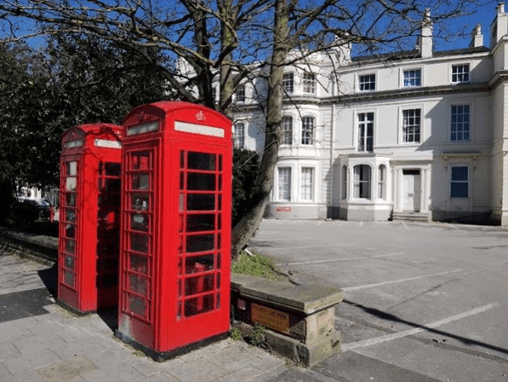
The Old Red Telephone Box
Coventry Society Member and Chair of the Stoke Local History Group, John Marshall, tells us the interesting story of the classic red telephone box. This article first appeared in the April 2025 edition of Jabet’s Ash, the newsletter of the Stoke Local History Group. John writes….
Once upon a time they were a familiar feature of any high street, suburb or village in Britain. But the old red telephone box has now become increasingly rare, and the ones that survive are now cherished as classic symbols of British design.
Two boxes have survived in Coventry city centre, neatly located in front of the Quadrant in Warwick Road, and both are Grade II listed by English Heritage (photo above). These days, neither box contains a telephone but they continue to offer a vivid reminder of a bygone age.
The red telephone box in Britain was designed by Sir Giles Gilbert Scott, whose major claim to fame was the design in 1903 of Liverpool’s Anglican Cathedral – a commission he won when he was only 22 years old. The cathedral was consecrated in 1924 but not completed until 1978. Scott was also the architect for Battersea Power Station in the 1930s and he might have become the architect for the new Coventry Cathedral, had his design in 1944 not been rejected by the Royal Fine Arts Commission.
Scott’s design for the telephone box followed a Post Ofice sponsored competition which he won in 1924. His prototype design was made of wood and can still be seen at the entrance to Burlington House, home of the Royal Academy in London. Scott originally intended his kiosk to be made of steel and painted silver, with a blue-green interior, but the GPO chose to make it of cast iron and painted red.
The winning design for the phone box was known as K2, meaning kiosk number two, and it followed an earlier telephone box made of concrete which the Post Office had introduced in 1921. That first kiosk was known as K1, and had been the first standard national design.
The dome shape roof of the K2 was one of its distinctive characteristics. Scott had been appointed Director of the Sir John Soane Museum at this time and there was speculation that the shape of the dome had been inspired by the shape of a tomb designed by Sir John for his wife Eliza in 1816, in the churchyard and gardens of St Pancras Old Church in London.
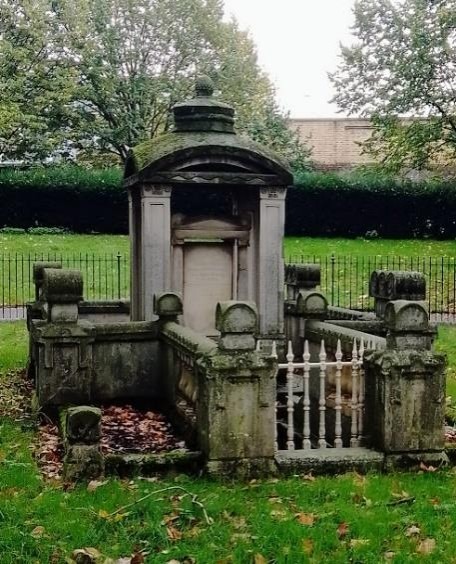
The K2 phone box underwent various modifications until 1935 when the Post Office commissioned Scott to design a new kiosk to celebrate the Silver Jubilee of King George V. The resulting kiosk was known as the K6 and this was the first red box to be used extensively outside London, with many thousands appearing in towns and cities around Britain.
The K6 had the advantage of being smaller than Scott’s earlier K2 and it weighed a good deal less. Elements of the design were simplified and streamlined, in keeping with the modernist aesthetic of the 1930s. The Coventry kiosks in front of the Quadrant are examples of the K6 design.
In 1935, when the K6 was first introduced, there were 19,000 public phone boxes in Britain and by 1940, thanks to the success of the K6, this had risen to 35,000. By 1960 there were 64,000 red kiosks in Britain.
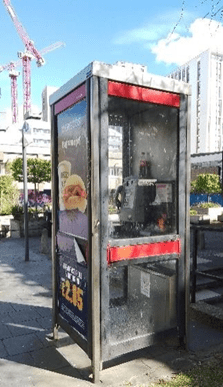
During the early days of telecommunications, relatively few people had their own phone at home and even in the 1960s a home telephone was still regarded as a luxury item. In 1951, around 1.5 million homes had a phone and by 1966 this had risen to 4.2 million. But by the end of the 60s more than half of UK households still did not have a telephone. This led to a consistently high demand for public telephone boxes and it was not unusual to find a queue outside boxes at busy times. It was also common to see callers outside phone boxes anxiously asking passers-by for change.
Throughout this period Coventry played a crucial role in the development of the telecommunications industry, with firms like GEC (General Electric Company), at the forefront of telephone production and telephone exchange technology. In 1946 Coventry also became one of the first cities outside London to introduce the 999 service, which often relied on callers rushing to a phone box to make an emergency call.
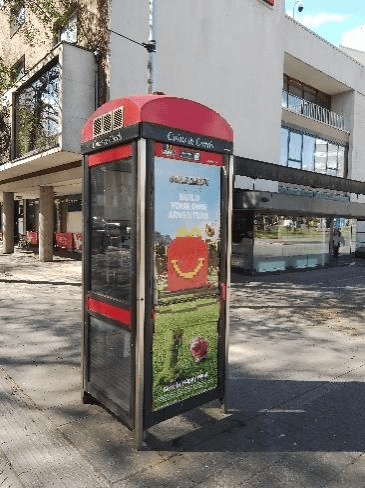
Gradually, home telephones became ubiquitous and demand for public phone boxes inevitably declined. In the 1970s and 80s the old boxes began to age, and complaints became more frequent about faulty phones, slow repairs and vandalism. This led to the eventual demise of the traditional red phone box and by 1984 the newly privatised British Telecom made sweeping changes, introducing new designs and removing many of the old K6 boxes. Many were sold off and others were adopted by local authorities or charities and turned into other things, such as miniature art galleries, libraries or homes for defibrillators.
In 2015 the traditional red phone box was voted the greatest British design of all time, ahead of the Routemaster bus, the Spitfire, the Union Jack and Concorde. Around 2,000 became ‘listed buildings’, including the pair in Coventry, and although the boxes at the Quadrant have not been given an alternative use, they are at least “protected for future generations”, according to a notice placed on the boxes by BT.
Buttons A and B
One of the features of the K6 phone box, often recalled with a strange mixture of fondness and foreboding, was the old payment system – which entailed the use of Buttons A and B. The caller would first pick up the phone to check the dialling tone, then put the appropriate coins in the box. They would then dial the number and, if someone answered, the caller would press Button A to make the connection. If, as they talked, the caller needed more time, pips sounded and the caller would have to put more coins in the slot. Failing this, the call was cut off. If no-one answered the initial call, the caller would press Button B and hope to get their money back in the tray below. It was a frequent occurrence for local children to make regular checks to see if coins had been accidentally left in the tray.
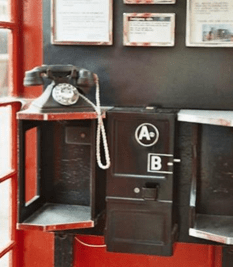
As long ago as 2006, media regulator Ofcom found that “virtually no consumers now rely on public phone boxes as their primary means of making calls”. And in 2012 it was reported that payphone use in the UK had declined by 80 per cent in the previous five years – a trend that has dramatically accelerated today with the use of mobile phones.
